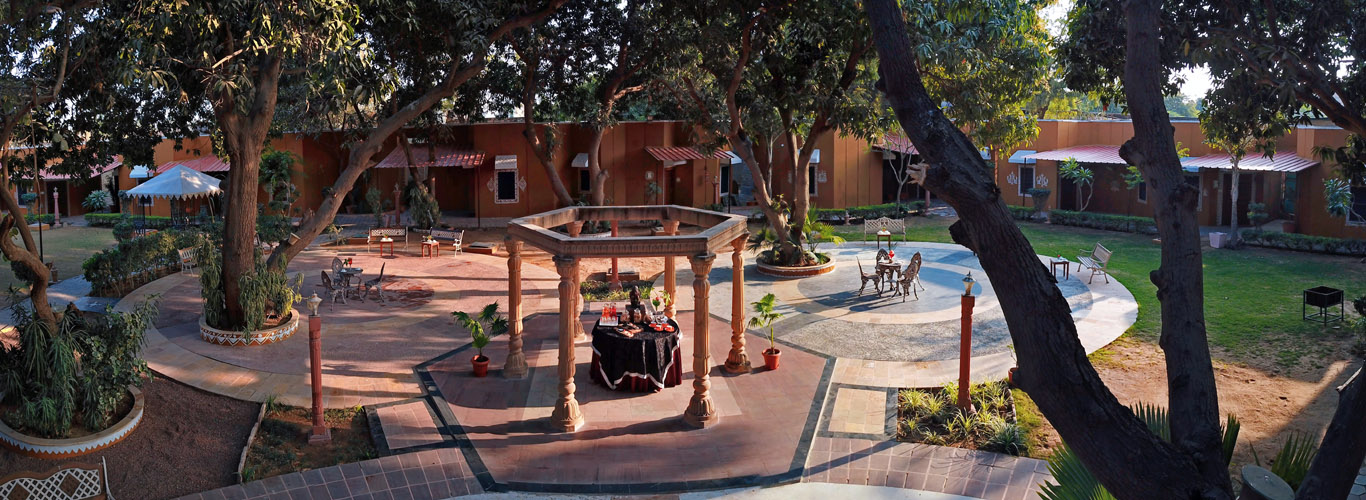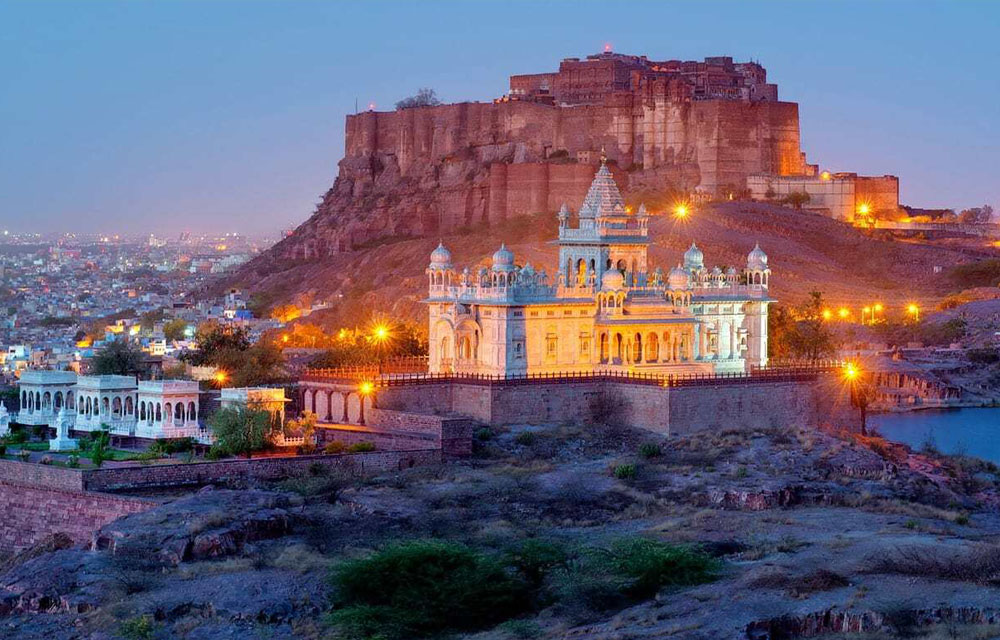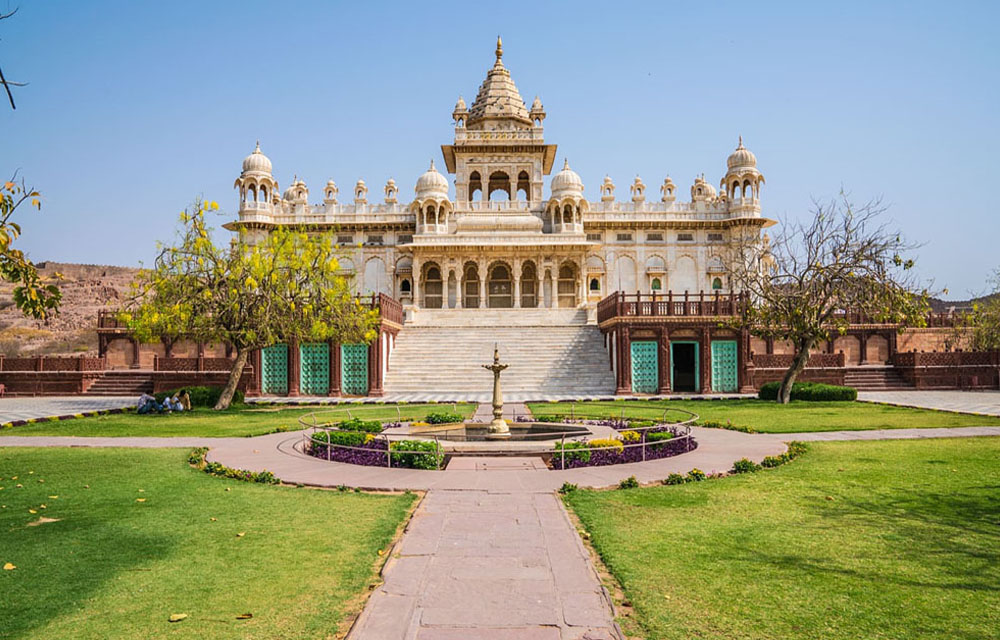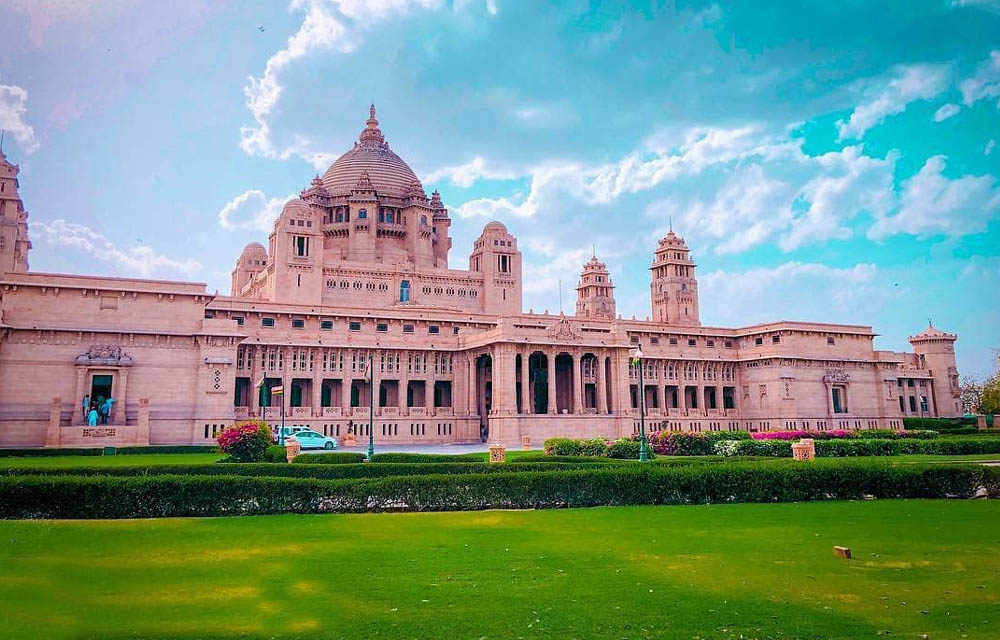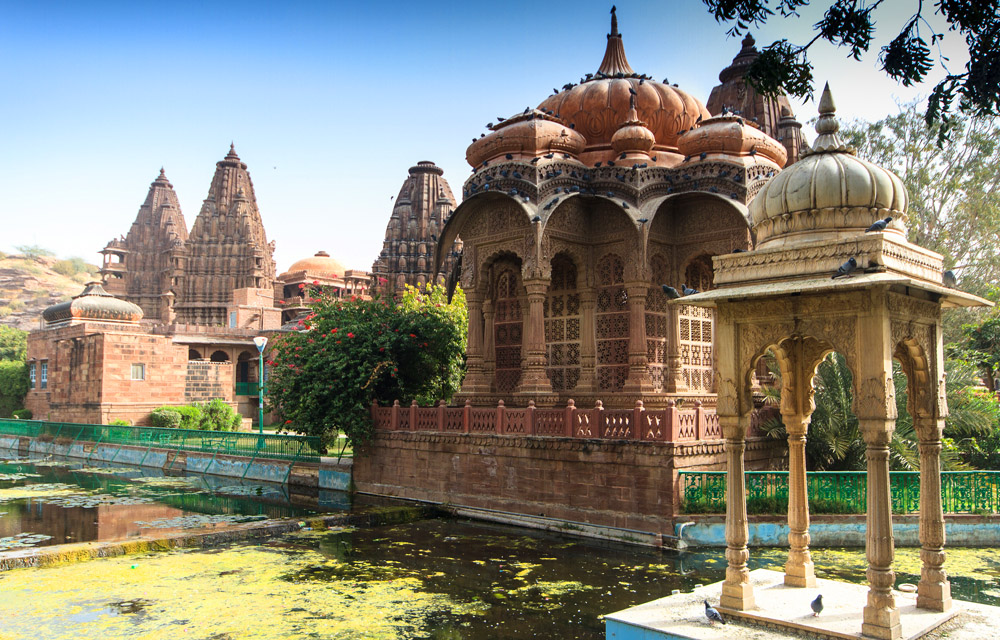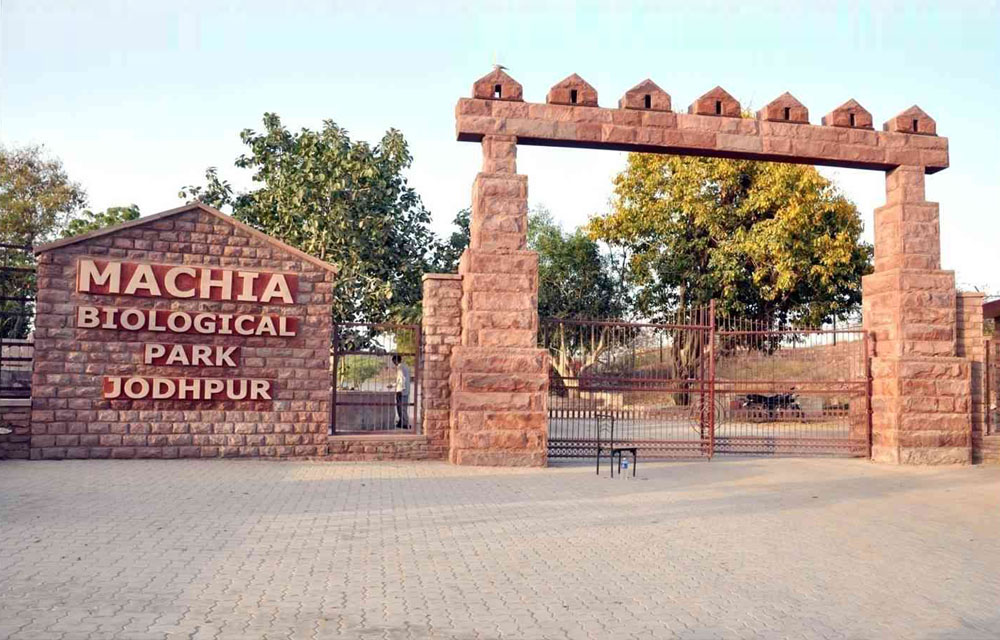-
Contact Us
Opp. Filter House,Chopasni Road, Jodhpur
Ph: +91 97722 19999
Ph: +91 88753 27775
Ph: +91 98290 27795
Attractions Of Jodhpur
Mehrangarh Fort
The impregnable Mehrangarh Fort, which rises above the city, is one of the largest forts in India. As impressive as it is, as a well preserved heritage structure. One of the highlights is the museum, which houses an outstanding collection of fine and applied arts from the Mughal period. There are seven gates, which include Jayapol.The old city circles the fort and is bounded by a wall with several gates. However, the city has expanded greatly outside the wall over the past several decades.Jodhpur lies near the geographic centre of the Rajasthan state, which makes it a convenient base for travel in a region much frequented by tourists.
Jaswant Thada
To the left of the Mehrangarh Fort compound is the Jaswant Thada of Jodhpur, Rajasthan. It is a 19th century royal cenotaph built in commemoration of Maharaja Jaswant Singh II, the 33rd Rathore ruler of Jodhpur. The son of Maharaja Jaswant Singh, Maharaja Sardar Singh, in the memory of his father.The mausoleum is built out of intricately carved sheets of marble. These sheets are extremely thin and polished so that they emit a warm glow when illuminated by the Sun.The cenotaph's grounds feature carved gazebos, a tiered garden, and a small lake. There are three other cenotaphs in the grounds. The cenotaph of Maharaja Jaswant Singh displays portraits of the rulers and Maharajas of Jodhpur.
Umaid Bhawan
The Umaid Bhawan Palace, was constructed between 1929 and 1944. Constructed in what can loosely be described as the Indo-Art-Deco style, this magnificent edifice with 347 rooms is the world's largest private residence when it opened its doors as a royal residence in 1944. The Palace is divided into three functional parts – the residence of the royal family, a luxury Taj Palace Hotel, and a Museum focusing on the 20th-century history of the Jodhpur Royal Family.The museum has exhibits of stuffed leopards, a very large symbolic flag given to Maharaja Jaswant Singh by Queen Victoria in 1877, lighthouse shapes. The classic cars of the Maharajas are also on display in the garden in front of the museum.
Mandore Garden
Mandore was the capital of the Marwar region before Jodhpur was founded but now it's in a miserable condition. There's an old fort, as well as an eclectic collection of temples and cenotaphs, and a small museum, in the Mandore Gardens. It could be a really attractive tourist spot. The Mandore Gardens also house a government museum, a 'Hall of Heroes' and a Hindu temple to 33 crore gods. Various artefacts and statues found in the area are housed at the museum.Ravan temple is another attraction at Mandore. It is believed to be the native place of Ravan's wife Mandodari. Ravan is treated as son in law among some local Brahmins.
Machia Biological Park
Machia Biological Park will be opened for public in March which will thus put Jodhpur on the eco-tourism map of the country. Biological park will house lions, tigers, jackals, hyenas, desert cats and desert foxes from different zoos across the country, including Jodhpur. The Jodhpur Zoo was established by Maharaja of Jodhpur H.H. Umaid Singhji in year 1935. The Zoo is situated within the premises of the "Public Park" popularly known as Umaid Udhyan, Jodhpur.
Rao Jodha Desert Rock Park
Rao Jodha Desert Rock Park was created in 2006 to try and restore the natural ecology of a large, rocky wasteland next to Mehrangarh Fort in Jodhpur. It had suffered years of neglect and was overrun by baavlia (Prosopis juliflora), an invasive, thorny shrub introduced from central America almost a century ago. The challenge was to eradicate the baavlia and create a suitable home for native rock-loving plants that we would bring back from the desert.


